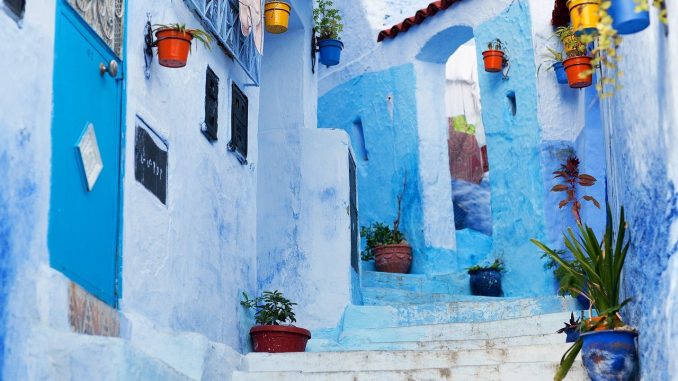
For centuries, Moroccan Jews have lived in the Mellah adjacent to the Al Souika district. The Mellah is considered an institution in its own right, with residential, economic and social functions, and has always been an integral part of the components of the ancient medinas.
The Mellah contributed to the urban expansion of the city, while generating social and economic development, which made the city a reference in terms of urban planning, convergence, cultural mixing and respect for religious and ethnic differences. Jews lived side by side with Muslims, and were considered one of the essential social and cultural components of the city, which gave rise to a civilizational mix, embodied in the customs, traditions, lifestyle, crafts, local products …
In a statement, the historian of the city, Ali Raissouni, stressed that the Jews have settled in Chefchaouen at various times, noting the existence of old Jewish families established in the city since its founding, and other families from Andalusia.
In addition, there are families who came from Fez during the Saadian period to practice certain trades that were widespread during that period. They resided in the locality of “Id Ben Abdellah”, before settling in a neighborhood called “the Mellah”, located near Dar Chérif Sidi Al Hassan Raissouni.
These immigrations contributed to the urban expansion of the Medina, which is distinguished by the singularity of its urban physiognomy, and its architectural, artistic and aesthetic expressions.
The Jews of the Medina, composed of seven districts: Al Souika, Rif Al Andalous, Al Sbbanin, Kharrazin, Al Onsar, Mellah and Bab Al Souk, practiced trades that they mastered, and whose know-how was transmitted from generation to generation, in this case the manufacture of jewelry, sewing, and the sale of fabrics, to the point of becoming a reference in this field of activity.
Despite its different components, the arrival of several communities since its founding, its urban expansion, its social development and economic growth, the city has been able to retain its Andalusian character that gives it a distinctive image in the minds of people.
Mr. Raissouni said that Chefchaouen is an exemplary civilizational site where the local traditions of the region of Jbala and the influences of the Andalusian civilization brought by the Andalusians and Moorish, noting that the city has become a destination of choice for national and international visitors.

Be the first to comment